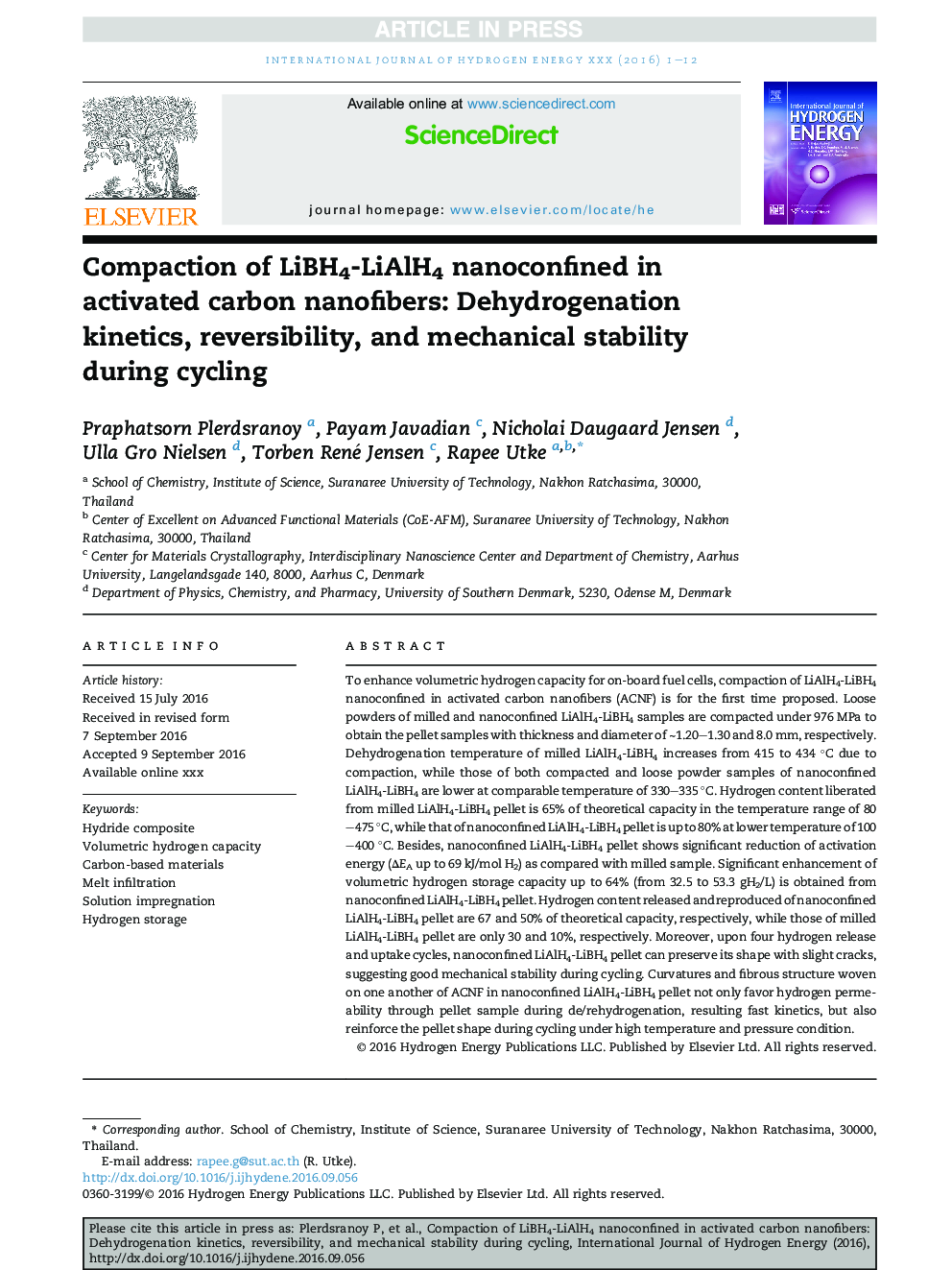| Article ID | Journal | Published Year | Pages | File Type |
|---|---|---|---|---|
| 5146707 | International Journal of Hydrogen Energy | 2017 | 12 Pages |
Abstract
To enhance volumetric hydrogen capacity for on-board fuel cells, compaction of LiAlH4-LiBH4 nanoconfined in activated carbon nanofibers (ACNF) is for the first time proposed. Loose powders of milled and nanoconfined LiAlH4-LiBH4 samples are compacted under 976 MPa to obtain the pellet samples with thickness and diameter of â¼1.20-1.30 and 8.0 mm, respectively. Dehydrogenation temperature of milled LiAlH4-LiBH4 increases from 415 to 434 °C due to compaction, while those of both compacted and loose powder samples of nanoconfined LiAlH4-LiBH4 are lower at comparable temperature of 330-335 °C. Hydrogen content liberated from milled LiAlH4-LiBH4 pellet is 65% of theoretical capacity in the temperature range of 80-475 °C, while that of nanoconfined LiAlH4-LiBH4 pellet is up to 80% at lower temperature of 100-400 °C. Besides, nanoconfined LiAlH4-LiBH4 pellet shows significant reduction of activation energy (ÎEA up to 69 kJ/mol H2) as compared with milled sample. Significant enhancement of volumetric hydrogen storage capacity up to 64% (from 32.5 to 53.3 gH2/L) is obtained from nanoconfined LiAlH4-LiBH4 pellet. Hydrogen content released and reproduced of nanoconfined LiAlH4-LiBH4 pellet are 67 and 50% of theoretical capacity, respectively, while those of milled LiAlH4-LiBH4 pellet are only 30 and 10%, respectively. Moreover, upon four hydrogen release and uptake cycles, nanoconfined LiAlH4-LiBH4 pellet can preserve its shape with slight cracks, suggesting good mechanical stability during cycling. Curvatures and fibrous structure woven on one another of ACNF in nanoconfined LiAlH4-LiBH4 pellet not only favor hydrogen permeability through pellet sample during de/rehydrogenation, resulting fast kinetics, but also reinforce the pellet shape during cycling under high temperature and pressure condition.
Related Topics
Physical Sciences and Engineering
Chemistry
Electrochemistry
Authors
Praphatsorn Plerdsranoy, Payam Javadian, Nicholai Daugaard Jensen, Ulla Gro Nielsen, Torben René Jensen, Rapee Utke,
